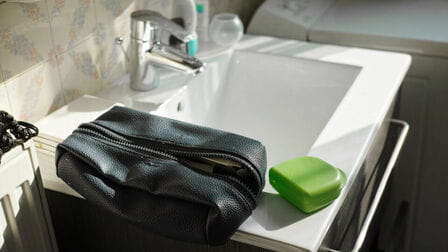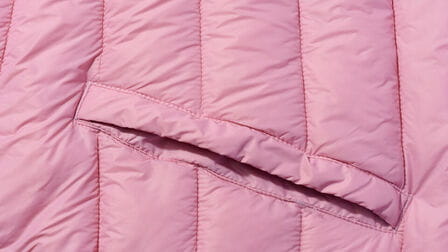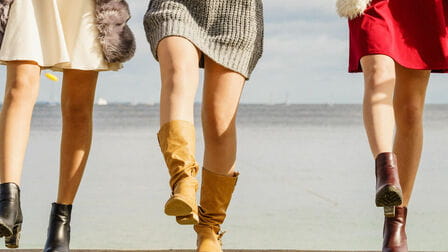As the weather begins to change with the seasons, it's common to wonder when you should switch out your warmer clothes for cooler ones or vice versa. Getting the timing right matters — not only for comfort, but for functionality as well. This article provides guidelines on ideal times to rotate your seasonal wardrobes.
General Rules of Thumb
Here are some general rules of thumb to follow when changing over seasonal clothing items:
Spring
- Around March/April, start phasing out heavier winter wear and bringing in lighter spring clothing. This includes packing away heavy coats and sweaters and swapping in lighter jackets, blouses, dresses and more.
- Temperatures can fluctuate in springtime, so layering is key. Keep some warmer winter wear handy for cold snaps.
Summer
- By June, most northern climates are reliably warm enough for strictly summer clothing — shorts, tanks, tees, sandals, swimwear and the like. Stow the rest of your cold weather wear.
- For southern regions, this changeover can happen a few weeks earlier in May. Plan based on your local weather patterns.
Fall
- Come September, temperatures start dropping. Slowly transition summer clothes into storage and take out long sleeves, jeans, light jackets and other fall wear.
- Layering is useful again in fall. Have some summery pieces handy for unseasonably warm days.
Winter
- By December, haul out the heavy winter artillery — coats, boots, sweaters and cold weather accessories. Store the rest of your lighter transitional gear until next autumn.
- Cold snaps can hit earlier for northern areas. Adjust timelines based on your area’s first freeze/snowfall dates.
Other Considerations
Aside from the general guidelines above, a few other factors impact ideal seasonal changeover times:
Climate Differences
Regions with milder climates — e.g. southern coastal areas — can delay storage of summer wear a bit later into fall. Likewise, cold weather gear can be put away a little earlier in spring.
But in extreme northern regions with long, brutal winters, the reverse is true — summer wear goes into hibernation earlier and cold weather gear stays in rotation longer.
Personal Comfort Factors
Ideal timing can also be affected by individual comfort levels and preferences. Some people run cold all the time and favor bundling up — even when temperatures are moderately warm. Others seem to radiate heat and stay comfortable in shorts and t-shirts even into fall.
There are no right or wrong choices — just go with what feels best for your needs. Flow with the seasonal changes while keeping personal preferences in mind as well.
Occasional Use Items
For clothing pieces that see only occasional or specialty use during a given season, storage timing may also vary.
For example, heavy winter boots may still be useful during spring if you live in a region prone to late season snowstorms. And a bathing suit might still get good use into early fall if planning a beach vacation.
Use best judgement when storing items not in constant rotation. Consider usefulness for events or trips coming up soon.
Tips for Seamless Seasonal Transitions
Streamline your bi-annual wardrobe flip by keeping these tips in mind:
Edit Before Storing
Before packing clothes away into storage, take time to edit what remains and what goes:
- Try on items you haven’t worn in awhile and determine if they still fit properly or suit your current tastes. Donate or consign whatever fails to make the cut.
- Inspect items for damage like holes, broken zippers or excessive pilling. Repair or remove damaged pieces.
- Check items for musty smells or stains. Wash or dry clean dirty pieces before storing so they stay fresh.
Use Protective Storage
To safeguard seasonal clothing in storage:
- Launder items first before packing away so they stay clean and fresh.
- Use breathable storage containers like cloth bins or wardrobe boxes rather than airtight plastic tubs. This allows clothes to “breathe” while packed away.
- Store clothing in cool, dark spaces to prevent light damage or moisture accumulation from temperature fluctuations.
- Use cedar blocks, linen sprays or other natural repellents if you’re concerned about moths or silverfish exposure during storage.
Label Clearly
Make locating stored clothing quick and convenient later by:
- Using clear plastic totes or open wardrobe boxes so contents are visible rather than opaque containers.
- Labeling each container by season and gender or family member. For example, “Fall Kids Clothes,” “Her Spring Outerwear,” etc.
- Making a master list of all containers and their contents to simplify finding items later on.
Following these wardrobe rotation fundamentals takes the guesswork and chaos out of seasonal changeovers. You’ll stay comfortable through fluctuating weather while keeping your favorite seasonal staples protected during their time in storage.
Conclusion
Determining ideal timing for switching seasonal wardrobes depends on both general climate patterns and individual factors like regional weather variations and personal preferences.
While general guidelines provide a rough transition schedule to follow annually, stay flexible and make adjustments accordingly. Flow with Mother Nature’s seasonal rhythms while tailoring timing to fit your local forecast and individual needs.
With some yearly editing and proper storage methods, you can seamlessly shift your wardrobe from season to season. Making thoughtful clothing choices for the months at hand helps ensure you look and feel your best all year long.

















